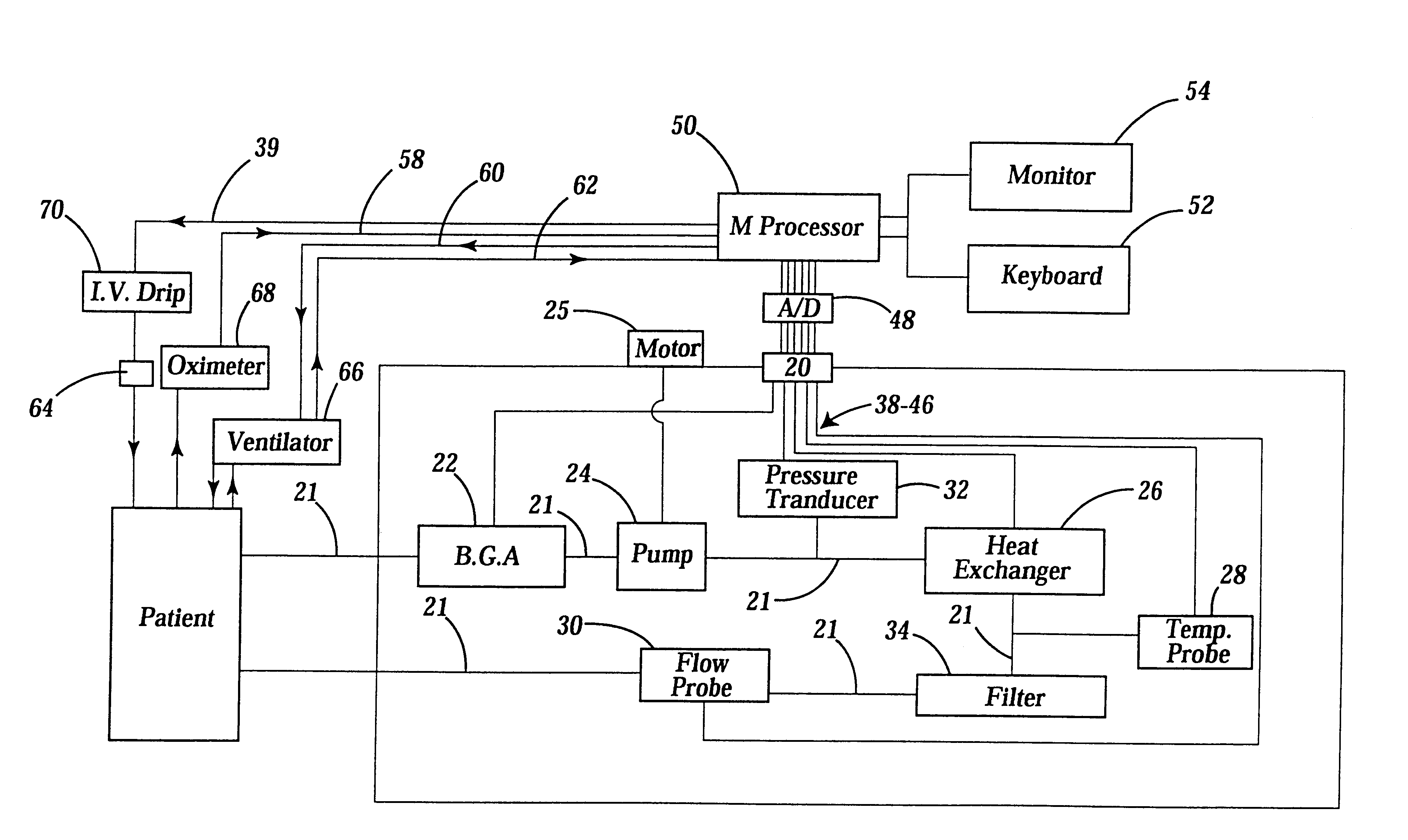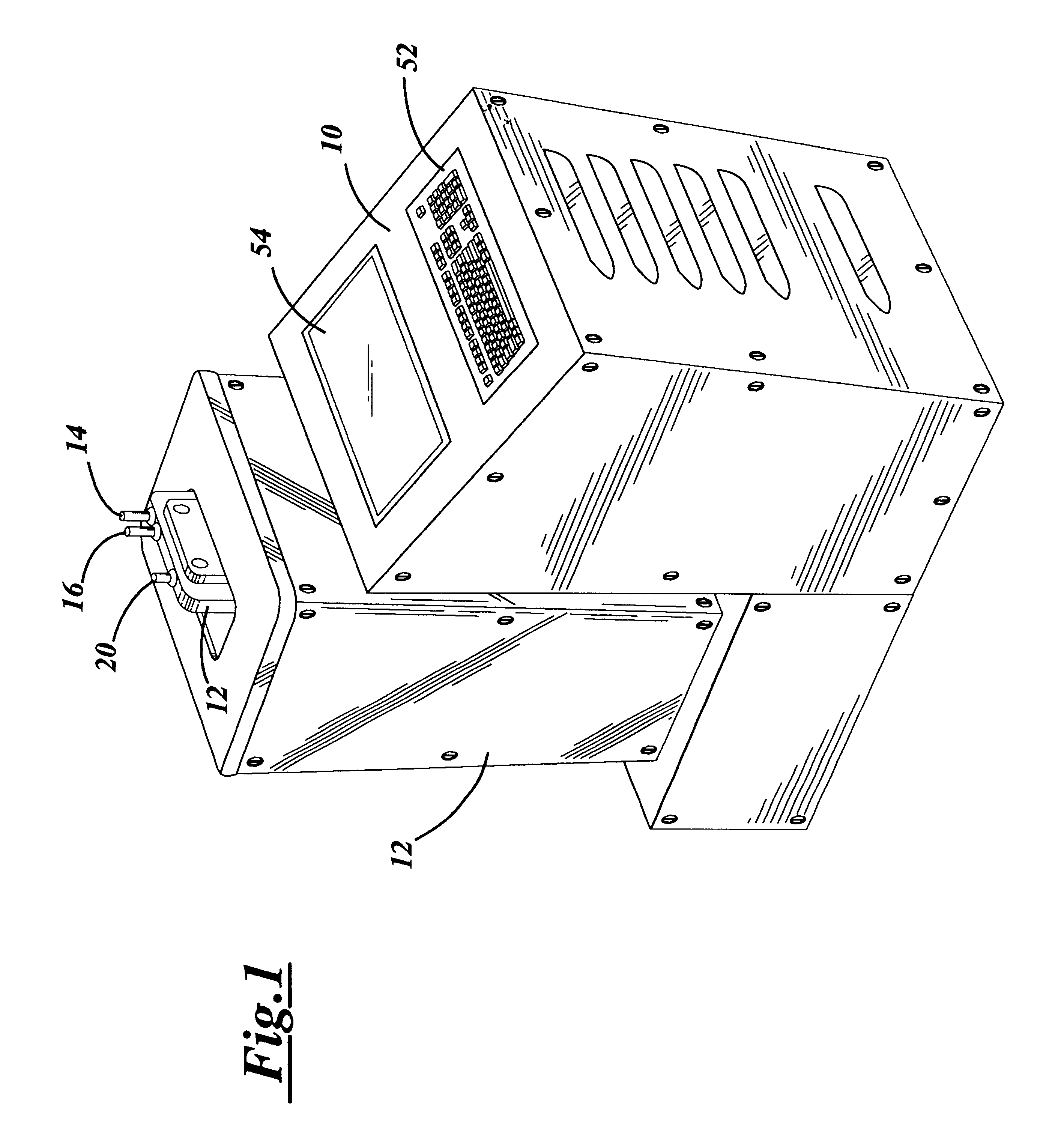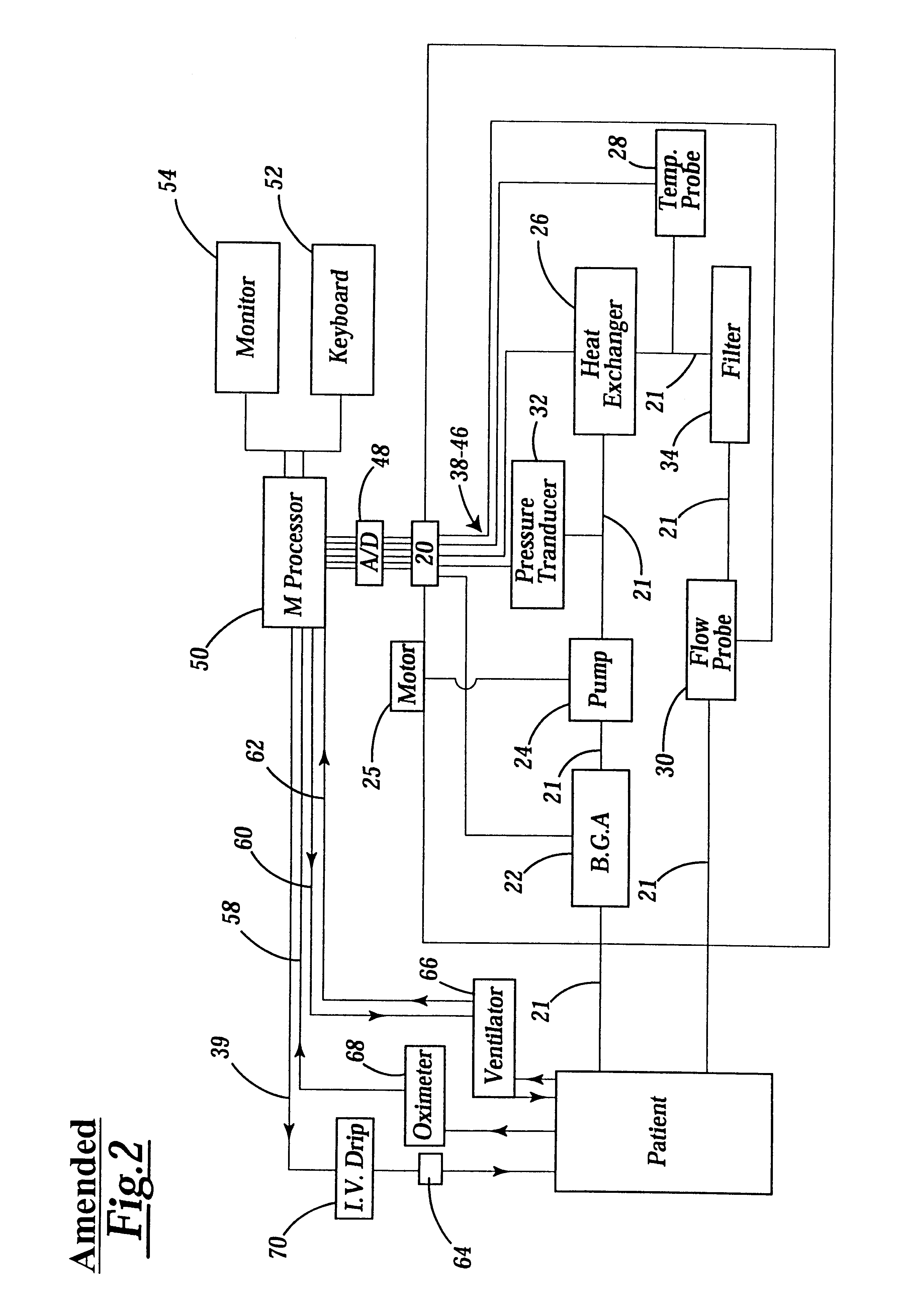Extracorporeal whole body hyperthermia using alpha-stat regulation of blood pH and pCO2
a whole body hyperthermia and alpha-stat technology, applied in the field of extracorporeal whole body hyperthermia using alpha-stat regulation of blood ph and pco2, can solve the problems of increased respiratory rate effectively, reduced pco.sub.2 (and total co.sub.2) of circulating blood, and plagued soldiers
- Summary
- Abstract
- Description
- Claims
- Application Information
AI Technical Summary
Benefits of technology
Problems solved by technology
Method used
Image
Examples
example 1
Given that the Arterial blood gas pH=7.5, pCO.sub.2 =25, and HCO.sub.3.sup.- concentration=16 1. Normal arterial bicarb=24 mEq / L 2. pCO.sub.2 is decreasing, therefore subtract -3 mEq / L; Hence, anticipated bicarb=21 mEq / L 3. (anticipated bicarb=21)-(measured bicarb=16)=5 mEq / L base deficit
example 2
Given that the Venous blood gas pH=7.1, pCO.sub.2 =50, and HCO.sub.3.sup.- concentration =12 1. Normal .[.arterial.]. .Iadd.venous .Iaddend. bicarb=26 mEq / L 2. pCO.sub.2 is increasing, therefore add 1 mEq / L; Hence, anticipated bicarb=27 mEq / L 3. (anticipated bicarb=27)-(measured bicarb=12)=15 mEq / L base defecit or -15 mEq / L base excess
A negative base excess, sometimes referred to as base deficit indicates metabolic acidosis and is treated with Sodium bicarbonate (NaHCO.sub.3). A positive base excess indicates metabolic alkalosis which is generally not seen during extracorporeal circulation but can occur due to over use of bicarb and can be treated by the use of a slightly acidotic crystalloid solution such as Normal Saline (0.09% NaCl) solution
Generally a base excess of 0.+-.3 mEq / L is clinically acceptable and no action is normally taken. When the base excess exceeds these values, the following action is taken. When there is a base deficit, the extracellular fluid (ECF) [volume.tim...
PUM
 Login to View More
Login to View More Abstract
Description
Claims
Application Information
 Login to View More
Login to View More - R&D
- Intellectual Property
- Life Sciences
- Materials
- Tech Scout
- Unparalleled Data Quality
- Higher Quality Content
- 60% Fewer Hallucinations
Browse by: Latest US Patents, China's latest patents, Technical Efficacy Thesaurus, Application Domain, Technology Topic, Popular Technical Reports.
© 2025 PatSnap. All rights reserved.Legal|Privacy policy|Modern Slavery Act Transparency Statement|Sitemap|About US| Contact US: help@patsnap.com



